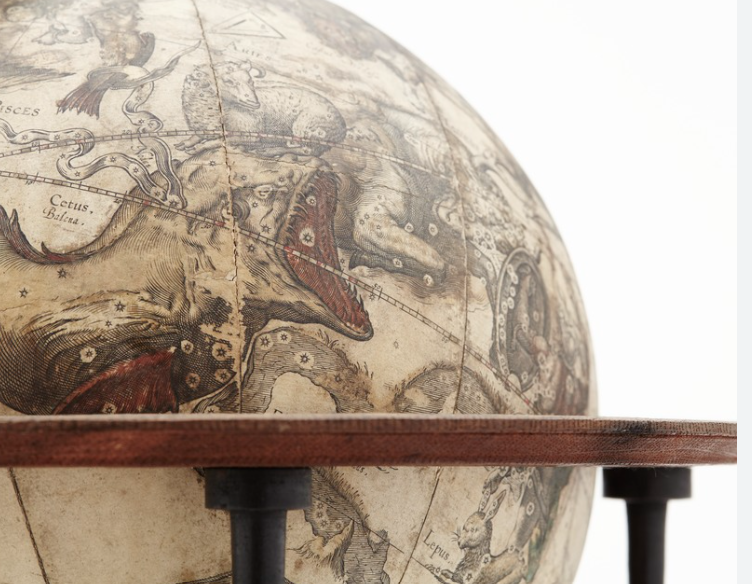In 18 months, Saturn’s wonderful rings will fade.
Galileo Galilei, the father of modern astronomy, saw Saturn’s rings in 1610. After using a primitive telescope, he called these celestial characteristics “ears.”
After centuries, anyone with basic astronomical gear may see Saturn’s rings.
Cosmological phenomenon
Saturn’s rings will disappear twice in 2025, ending this majestic sight. This cosmic phenomenon is believed to be made of seven rings from comets, asteroids, and moons that went too close to Saturn and were ripped apart by its massive gravity.
The cosmic dust-covered rings contain many icy pieces. Their exact age is unknown, although current study suggests they may have originated 400 million years ago, less than a tenth of Saturn’s age.
Invisible rings
Scientists now know that Saturn’s rings are disintegrating, producing a shower of frozen particles that enter the planet’s atmosphere. Saturn will align edge-on with Earth in 2025, hiding its beautiful rings. This is like finding a paper edge-on at the end of a soccer field.
Momentary occurrence
However, this celestial display is brief. While orbiting for 29.5 years, Saturn will tilt, revealing its rings again, peaking in 2032. Saturn’s moons are more visible due to this astronomical tilt. Saturn provides superb nighttime stargazing for now. So, grab a telescope and admire Saturn’s rings while you can.
Some Saturn info
Saturn, the sixth planet from the Sun, is the second largest after Jupiter. Hydrogen and helium dominate Saturn, a gas giant. The planet has a radius of nine times Earth’s but a low density and is just 95 times as massive.
Rings
Many micrometers to meters-sized particles circle Saturn in its ring system. These particles are primarily ice with some rocky debris and dust. A, B, and C are the primary rings, designated alphabetically by discovery.
Moons
At least 145 moons orbit the planet, with Titan being the largest and second largest in the Solar System after Ganymede. Titan, larger than Mercury, is the only moon having a considerable nitrogen-methane atmosphere.
A magnetic field
Saturn’s magnetic field is weaker than Jupiter’s but several times stronger than Earth’s. Saturn’s pole-based auroras emit radio waves.
Cassini-Huygens mission
The Cassini-Huygens mission, a NASA, ESA, and ASI collaboration, collected a lot of data on Saturn, its rings, and its moons from 2004 to 2017 by diving into Saturn’s atmosphere.
Mythology
Saturn was named after the Roman deity of agriculture and prosperity, Jupiter’s father. For centuries, this planet has been monitored, and its astrological symbol (♄) symbolizes the god’s sickle.
Saturn’s rings
Saturn’s rings are one of our solar system’s most spectacular features. Key facts concerning them:
Composition
Ice particles dominate the rings, with a little amount of dust and rocky debris. Ice particles range from grains to house-sized boulders.
Structure
The rings are formed of many tiny particles orbiting Saturn. They average 10 meters thick yet are up to 282,000 km broad.
Division
The rings’ A, B, C, D, E, F, and G parts vary in transparency and brightness. The most visible rings are A, B, and C.
Gaps
The Cassini Division, a 4,800-kilometer gap between the A and B rings, is one of many gaps within the rings. Also famous are the Encke and Keeler Gaps.
Dynamics
Saturn’s moons effect the rings’ structure and patterns through gravitational interactions, called “orbital resonances.” The rings’ pathways and sharp edges are maintained by “shepherd moons” orbiting near their edges.
Origin
Numerous theories explain the rings’ genesis. One theory is that they are moon or comet leftovers. Others believe they are remnants of Saturn’s nebular material. The rings may be a few hundred million years old, but their age is still debated.
Visibility
In favorable weather, a small telescope or high-powered binoculars may see the rings from Earth. Saturn tilts its axis as it rounds the Sun, causing changing angles to Earth during its 29.5-year cycle.
Exploration
Voyager 1 and 2 and Cassini have contributed detailed photographs and data, expanding our understanding of the rings.
Scientists have learned more about ring systems around other planets and solar system activities from Saturn’s rings.






